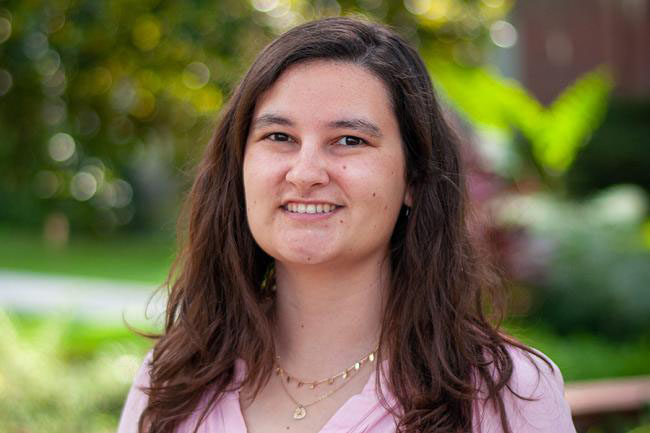Want broccoli or ice cream? FSU scientists uncover complexities in how your brain chooses

Why do we crave sweet treats over healthier options? While it comes down to how our brains process taste and what we expect from the food in front of us, a new study from Florida State University shows that more brain regions are involved in the process than previously thought.
A team of FSU neuroscientists has found that the mediodorsal thalamus, a brain region not previously linked to taste, plays a key role in how we perceive and anticipate flavor. The findings offer new insight into how food preferences form and why they’re so hard to break.
The team, led by Assistant Professor of Biological Science and Neuroscience Roberto Vincis, found that neurons in the mediodorsal thalamus respond both to the sensory details of taste — like whether something is sweet or salty — and to cues that signal what kind of taste is coming. That suggests this brain region is involved not just in experiencing flavor but also in predicting it.
This work was published in the Journal of Neuroscience.
“The mediodorsal thalamus has traditionally been studied in relation to higher-order functions, such as reward processing, decision-making and multisensory integration,” said Vincis, who is also affiliated with FSU’s Institute of Molecular Biophysics. “Because of this, it wasn’t considered a region that would process or represent basic taste information, like identifying what a taste is or how intense it is, especially in the absence of associations with other sensory modalities like smell.”
The gustatory pathway begins when our taste buds detect a taste and ends with that information reaching the gustatory cortex, a brain region in the cerebral cortex, or the outer layer of the brain. Sensory information, the data gathered from sight, hearing, touch, smell and taste, is integrated with the experience of one’s behavior or mood at the time of consumption. One experience is often all it takes to develop specific eating habits, such as a preference for or aversion to certain foods, which can have long-term effects on our nutrition and wellness.

“This research lays the foundation for work that makes up the bigger picture of the diagnosis and management of taste disorders and other aspects of human behavior that are impacted by taste,” said Katherine Odegaard, a postdoctoral researcher in the Vincis Laboratory and the paper’s first author. “Investigating the connection between the gustatory cortex and mediodorsal thalamus allows us to better understand how taste information is processed in the brain. While the mediodorsal thalamus was not considered part of the ‘classical’ taste pathway until now, our study found that it does process taste information and expectation related to taste, suggesting that this region plays a larger role in our eating behaviors than we thought.”
The team found that the mediodorsal thalamus encodes taste information in the absence of odor, a novel finding in the areas of chemosensation and ingestive behavior, and that neurons in the region respond differently to varying taste concentrations. This indicates that the mediodorsal thalamus can not only distinguish different taste qualities, like sweet vs. bitter, but also identify different concentrations of taste in sweet and salty foods — like sweet but not too sweet or salty but not too salty — in a linear fashion; as salt or sucrose concentration increased, some neurons’ responses increased and some decreased.
Researchers also found that neurons in the mediodorsal thalamus respond not only to taste itself but also to non-gustatory sensory cues like sounds that signal whether an upcoming taste will be pleasant or unpleasant, suggesting this region helps the brain prepare for what’s about to be experienced.
“It was surprising to see how different groups of neurons responded in our study,” Odegaard said. “Some neurons responded only to specific sounds, like how the jingle of an ice cream truck might make us expect something sweet. However, another group of neurons appeared to represent not just the auditory cue, but also the specific taste it predicted — whether it was pleasant or unpleasant. It could be that these neuron groups play a larger role in guiding behavior through predicted and expected outcomes, which is another reason why further investigation into the mediodorsal thalamus is necessary.”
Additional authors include FSU alumna and current adjunct professor at Pensacola State College Cecilia Bouaichi and biomathematics doctoral candidate Greg Owanga.
This research was funded by a $1.8 million grant from the National Institute on Deafness and Other Communication Disorders, part of the National Institutes of Health, granted to Vincis in 2022 to investigate how the brain encodes information about food and how this information affects an individual’s overall eating habits and food choices.
To learn more about research conducted in the Vincis Laboratory, visit bio.fsu.edu/vincislab. For more about the Program in Neuroscience, go to neuro.fsu.edu.
The post Want broccoli or ice cream? FSU scientists uncover complexities in how your brain chooses appeared first on Florida State University News.







